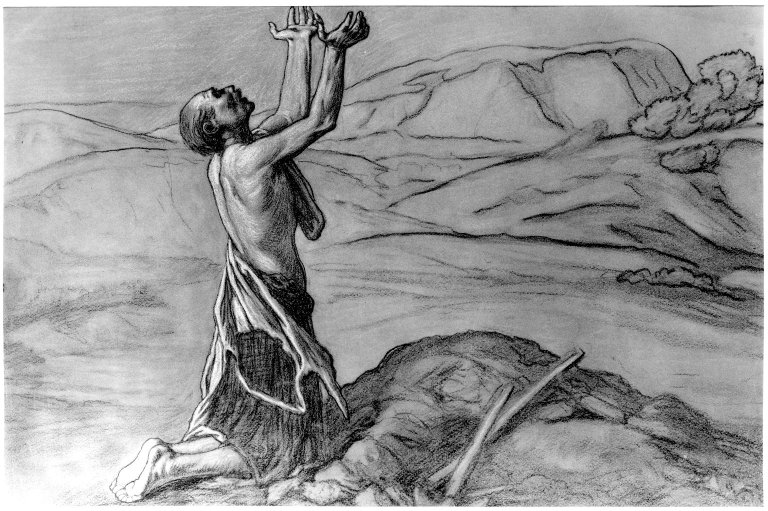
“To pray to God is to flatter oneself that with words one can alter nature.” — Voltaire

“To pray to God is to flatter oneself that with words one can alter nature.” — Voltaire
Charles Trigg proposed this festive cryptarithm in the American Mathematical Monthly in 1956:
MERRY XMAS TO ALL
If each letter is a unique representation of a digit, and each word is a square integer, what are these four numbers?
From reader Dave Lawrence: What is notable about these 14 sets of words?
accost commit launch deeded adhere heckle silent versed ampere arrive angers theses chance ascent tester stored chaste ascend tinder seeded cohere heckle silent versed debase mucked refile stress demure riffle silent versed endure shelve riling nested forego recess gossip needed herein advice resins stones rebate locket career tested recast costar pirate esters remade astute surest rested
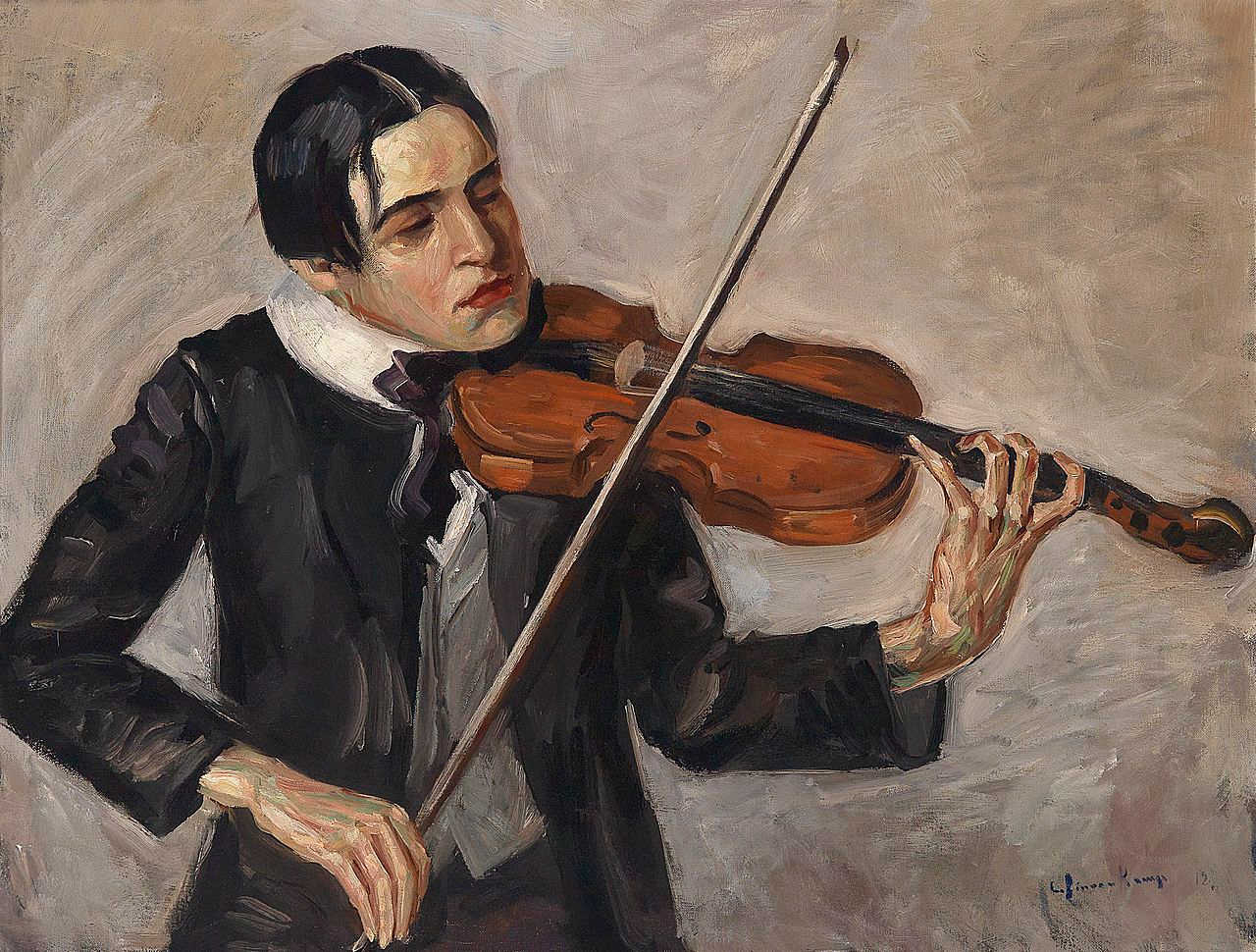
In this passage from Tennyson’s Morte d’Arthur, the mail-clad Sir Bedivere carries his wounded king down to a lake by a narrow path along a cliff:
Dry clash’d his harness in the icy caves
And barren chasms, and all to left and right
The bare black cliff clang’d round him, as he based
His feet on juts of slippery crag that rang
Sharp-smitten with the dint of armed heels —
And on a sudden, lo! the level lake,
And the long glories of the winter moon.
“This passage is particularly interesting in the sudden change from the harsh imitative sounds describing the trip itself to the peaceful passage, dominated by liquids and nasals, representing the arrival at the shore,” writes Calvin Brown in Music and Literature.
He gives two examples of poets attempting to imitate musical timbres. Detlev von Liliencron’s Die Musik kommt describes the progress of a military band through a little German village:
Klingling, tschingtsching und Paukenkrach,
Noch aus der Ferne tönt es schwach,
Ganz leise bumbumbumbum tsching,
Zog da ein bunter Schmetterling,
Tschingtsching, bum, um die Ecke?
And the first stanza of Paul Verlaine’s Chanson d’automne famously imitates a violin:
Les sanglots longs
Des violons
De l’automne
Blessent mon cœur
D’une langueur
Monotone.
In The Craft of Translation, John Biguenet writes, “English simply has no matching nasal sounds in words that would convey the meaning, unless we turn to trombones, and then we have changed instruments.”

One sticks a finger into the ground to smell what country one is in. I stick my finger into the world — it has no smell. Where am I? What does it mean to say: the world? What is the meaning of that word? Who tricked me into this whole thing and leaves me standing here? Who am I? How did I get into the world? Why was I not asked about it, why was I not informed of the rules and regulations but just thrust into the ranks as if I had been bought from a peddling shanghaier of human beings? How did I get involved in this big enterprise called actuality? Why should I be involved? Isn’t it a matter of choice? And if I am compelled to be involved, where is the manager — I have something to say about this. Is there no manager? To whom shall I make my complaint?
— Kierkegaard, Repetition, 1843
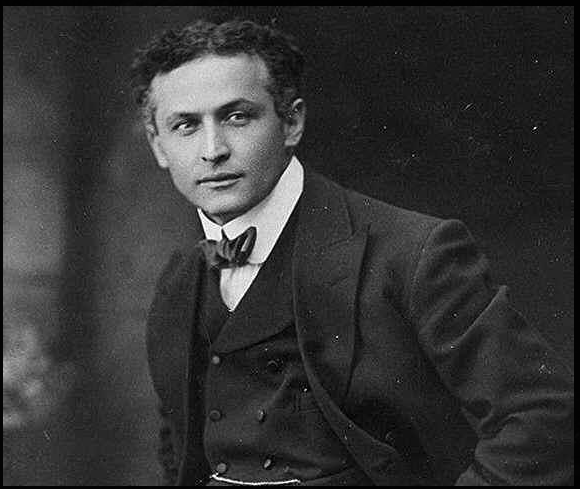
Harry Houdini worked out a code with his wife, Bess, so that they could communicate during his performances:
Pray = 1 = A
Answer = 2 = B
Say = 3 = C
Now = 4 = D
Tell = 5 = E
Please = 6 = F
Speak = 7 = G
Quickly = 8 = H
Look = 9 = I
Be quick = 10 or 0 = J
Each of the first 10 letters of the alphabet is represented by both a word and a number, so BAD, for example, could be represented by “Answer, Pray, Now.” Letters beyond the 10th would be represented with two digits; for example, S, the 19th letter, could be indicated by 1 and 9, “Pray-Look.”
After Houdini died in 1926, Bess waited for a message in this code, according to an agreement between them. In 1929, psychic Arthur Ford claimed to have received it:
Rosabelle, answer, tell, pray-answer, look, tell, answer-answer, tell.
“Rosabelle” is a song that Bess used to sing. The rest, decoded, spells out BELIEVE. At first Bess took this as a genuine message from her husband, but skeptics pointed out that by this time she had revealed the code to Harold Kellock, who had published it in a biography that had appeared the previous year. So Ford could simply have learned the code and prepared the message himself. Bess repudiated Ford’s claim and in 1936 stopped attending séances. She said, “Ten years is long enough to wait for any man.”
“Houdini never said he could come back,” observed Henry Muller, curator of the Houdini Magical Hall of Fame. “He just thought that if anybody could do it, it would be him.”
(From Craig Bauer, Unsolved!, 2017.)
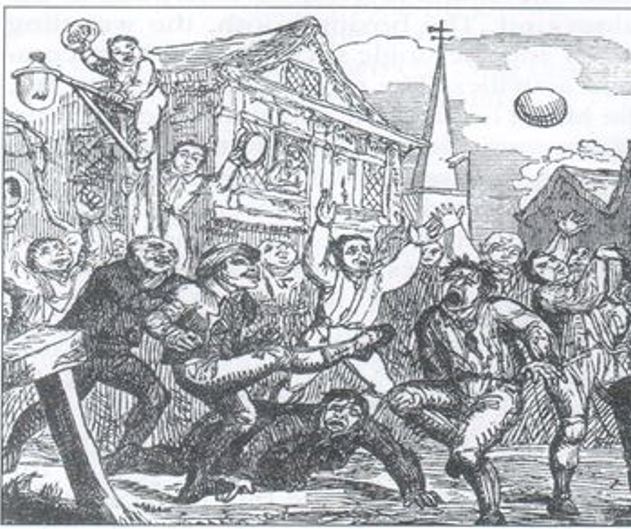
“Serious sport has nothing to do with fair play. It is bound up with hatred, jealousy, boastfulness, disregard of all rules and sadistic pleasure in witnessing violence: in other words it is war minus the shooting.”
— George Orwell, “The Sporting Spirit,” 1945
“[It is] to be utterly abjected of al noble men in likewise, footballe, wherein is nothinge but beastly furie and extreme violence whereof procedeth hurte and consequently rancour and malice do remaine with them that be wounded wherefore it is to be put in perpetuell silence.”
— Sir Thomas Elyot, The Governour, 1531
“For as concerning football playing, I protest unto you it may rather be called a freendly kinde of fight, then a play or recreation; A bloody and murthering practise, then a felowly sporte or pastime. … and hereof groweth envie, malice, rancour, cholor, hatred, displeasure, enmitie, and what not els: and sometimes fighting, brawling, contention, quarrel picking, murther, homicide, and great effusion of blood, as experience dayly teacheth.”
— Phillip Stubbes, Anatomy of Abuses, 1583
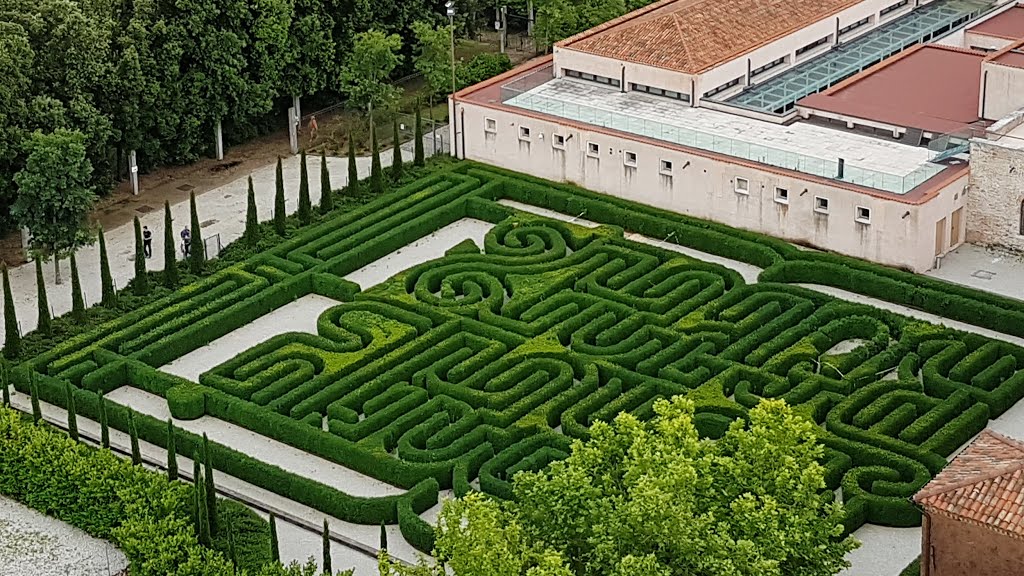
British maze designer Randoll Coate produced this tribute to Jorge Luis Borges — a labyrinth of hedges shaped like an open book and spelling out the author’s name. (The original maze is in the writer’s native Argentina; Coate donated the copy above to Borges’ foundation in Venice.)
“Five years before Borges died, I had a dream in which I heard that Borges had just died,” the designer recalled. “And I thought to myself, I must make sure that Borges is not memorialized with one of those terrible statues — a depiction of angels or something. He has to be honored with something truly Borgesian, in other words, a labyrinth. That’s when I began to design it and think about it and dream up a shape for it — an extraordinary labyrinth for a man with an extraordinary mind.”
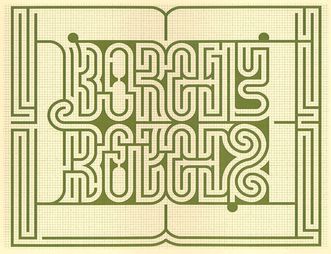
(From Francesca Tatarella, Labyrinths & Mazes, 2016.)
11/29/2017 UPDATE: Coate’s design is more sophisticated than I’d realized — from reader Daniël Hoek:
“The maze also contains a tiger, a walking stick, a question mark, the initials MK of his wife, and two hourglasses that spell the number of years Borges lived (’86’). After some effort I think I found all of those (the tiger is very cool once you find it –– you need to rotate the plan as in the attached image)”:
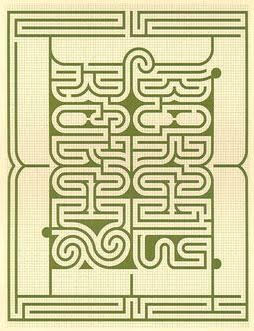
“PS. Another interesting tidbit: the maze in ‘The Garden of Forking Paths’ has the feature that you can make it through by going left at every turn. Starting at the top entrance and discounting any forced turns, that is also true of this maze, although that is a boring route that takes you around the maze and not through the center.”
Elisabeth Mann Borgese taught her dog to type. In her book The Language Barrier she explains that her English setter, Arli, developed a vocabulary of 60 words and 17 letters, though “He isn’t an especially bright dog.” “[Arli] could write under dictation short words, three-letter words, four-letter words, two-letter words: ‘good dog; go; bad.’ And he would type it out. There were more letters but I never got him to use more than 17.”
She began in October 1962 by training all four of her dogs to distinguish 18 designs printed on saucers; Arli showed the most promise, so she focused on him. By January 1963 he could count to 4 and distinguish CAT from DOG. Eventually she gave him a modified typewriter with enlarged keys, which she taught him to nose mechanically by rewarding him with hamburger. “No meaning at all was associated with the words,” she writes, though he did seem to associate meaning with words that excited him. “When asked, ‘Arli, where do you want to go?’ he will unfailingly write CAR, except that his excitement is such that the ‘dance’ around the word becomes a real ‘stammering’ on the typewriter. ACCACCAAARR he will write. GGOGO CAARR.”
(And it’s always tempting to discover meaning where there is none. Once while suffering intestinal problems after a long flight Arli ignored his work when she tried to get him to type GOOD DOG GET BONE, and then he stretched, yawned, and typed A BAD A BAD DOOG. This was probably just a familiar phrase that he’d chosen at random; Borgese estimated its likelihood at 1 in 12.)
Arli did earn at least one human fan — at one point Borgese showed his output to a “well-known critic of modern poetry,” who responded, “I think he has a definite affinity with the ‘concretist’ groups in Brazil, Scotland, and Germany [and an unnamed young American poet] who is also writing poetry of this type at present.”
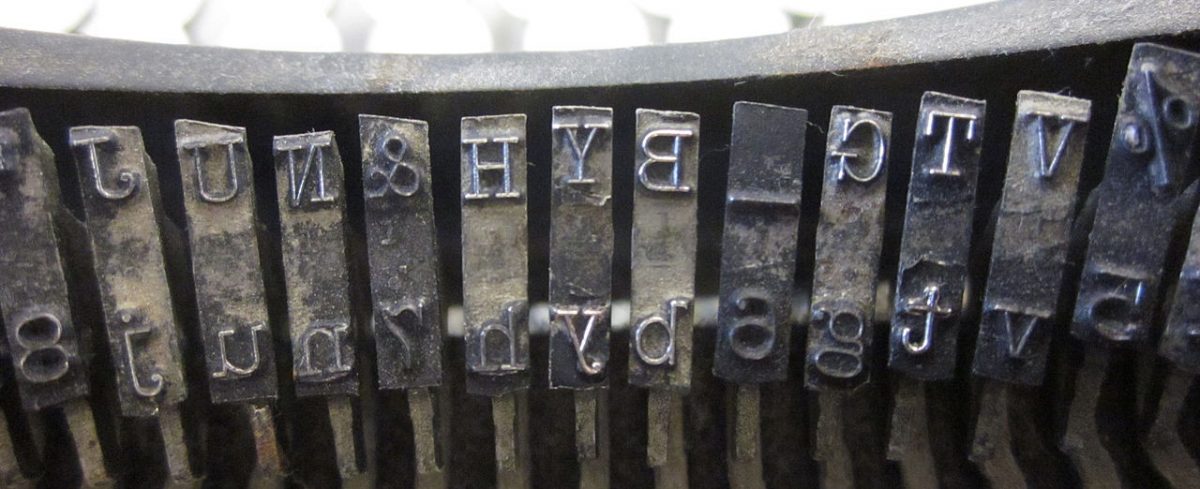
In the early days of typewriting, this was usually the first thing typed on each new typewriter after it rolled off the production line:
Amaranath sasesusos Oronoco initiation secedes Uruguay Philadelphia
A worker known as an aligner typed it to check that the resulting letters were aligned correctly on the platen.
How does it work? ‘Amaranath,’ the misspelled name of an imaginary flower, checks the alignment of the vowel ‘a’ between a number of common consonants. ‘Oronoco’ checks the ‘o’ key, while ‘secedes,’ ‘initiation’ and ‘Uruguay’ check three vowels that are among the most commonly used of all letters, ‘e,’ ‘i,’ and ‘u.’ ‘Sasesusos’ not only compares four of the five vowels in the same word against the baseline of the letter ‘s,’ but also ‘includes several of the most common letter combinations in twentieth-century business English.’ ‘Philadelphia’ checks the horizontal alignment of ‘i’ and ‘l,’ the narrowest letters on the keyboard.
What does “Amaranath sasesusos Oronoco initiation secedes Uruguay Philadelphia” actually mean? “Unlike most sentences, it was rarely spoken, and no one particularly cared what it might mean in the conventional sense.” (The “quick brown fox” came later.)
(From Darren Wershler-Henry, The Iron Whim, 2005.)